Moments
What is a moment? To make calculations easier, we try to measure how far the force is from the pivot, but only in the direction that is at right angles to the force. One way to understand moments is to think about opening a door. You apply a force on the handle, and the door swings around its hinges. The hinges are the pivot point, and the force you apply creates a moment that makes the door rotate. You can also see that the closer you are to the pivot, the more force you need to apply to open or close the door. For example (as shown in the diagram below), if you try to push the door near the hinges, you will have to use a lot more force. How to calculate a moment or M = F x D Where: For example: To open a door, a person pushes on the door handle with a force of 18 N. The distance between their hand and the hinges is approximately 0.75 metres. The moment used to open the door is: Moment = Force × Distance The moment used to open the door is 13.5 Nm. It’s important to remember: Symbol Unit Unit Symbol Moment M Newton-metres Nm Force F Newtons N Distance d Metres m
A moment is the turning effect of a force. Forces that create a moment act around a point called a pivot. On a seesaw the pivot is the point in the middle.
When calculating a moment, it is important to know:
For example, when you use a spanner to turn a bolt, the spanner rotates. The bolt is the pivot.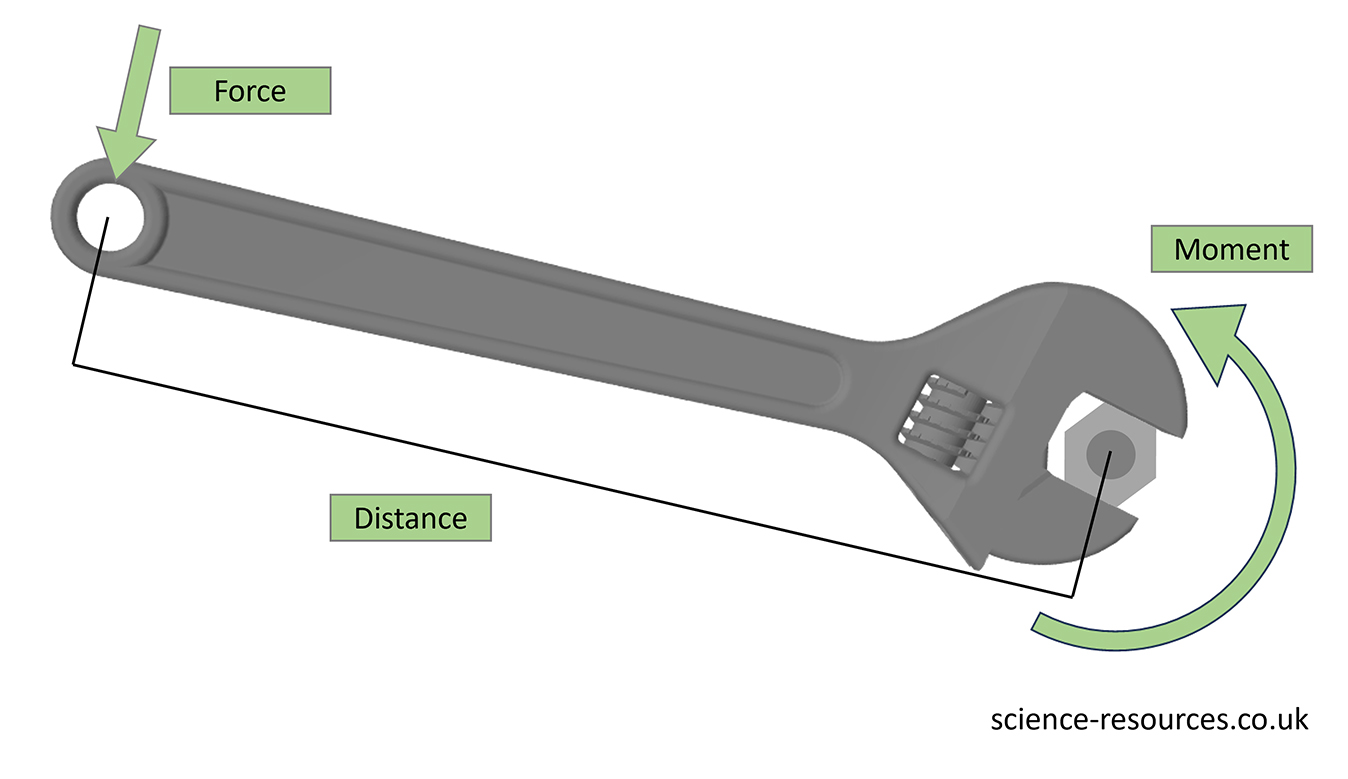
The design of a door makes use of the fact that the moment of a force depends on both the size of the force and the distance from the pivot to where the force is applied.
The farther away from the pivot you apply the force, the bigger the moment will be, and the easier it will be to open or close the door. That’s why the handle is on the opposite side of the door from the hinges.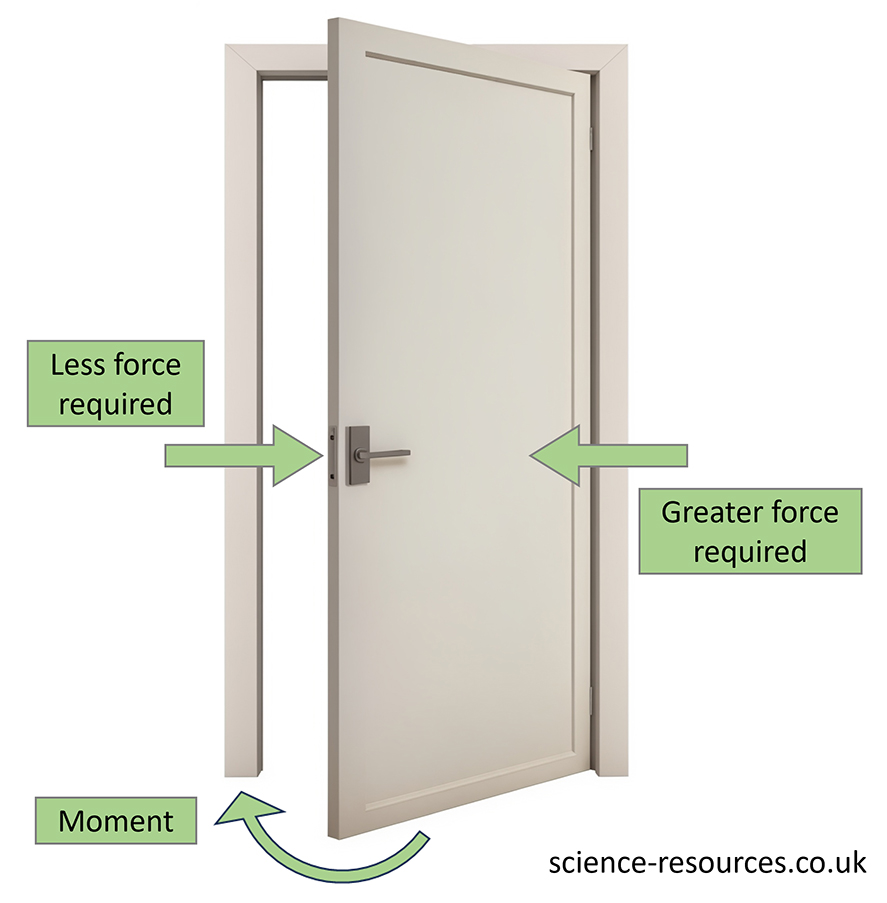
To calculate a moment the equation is:
Moment = Force × Distance
• Moment (M) is measured in newton metres (Nm)
• Force (F) is measured in newtons (N)
• Perpendicular distance from pivot (d) is measured in metres (m)
Moment = 18 x 0.75
Moment = 13.5 Nm
Physical Quantity
Why don’t cranes fall over? Using the principle of moments, we can calculate the maximum load that can be lifted at different positions along the mast (or jib) using the formulae: Where: Example: Using the principle of moments, when is the crane balanced? Moment of load = ? x 10
Tower cranes lift heavy building materials using a horizontal arm called a jib. To prevent the crane from falling over, concrete or steel blocks are suspended at the other end of the jib. They act as a counterweight to create a moment that opposes the moment due to the load.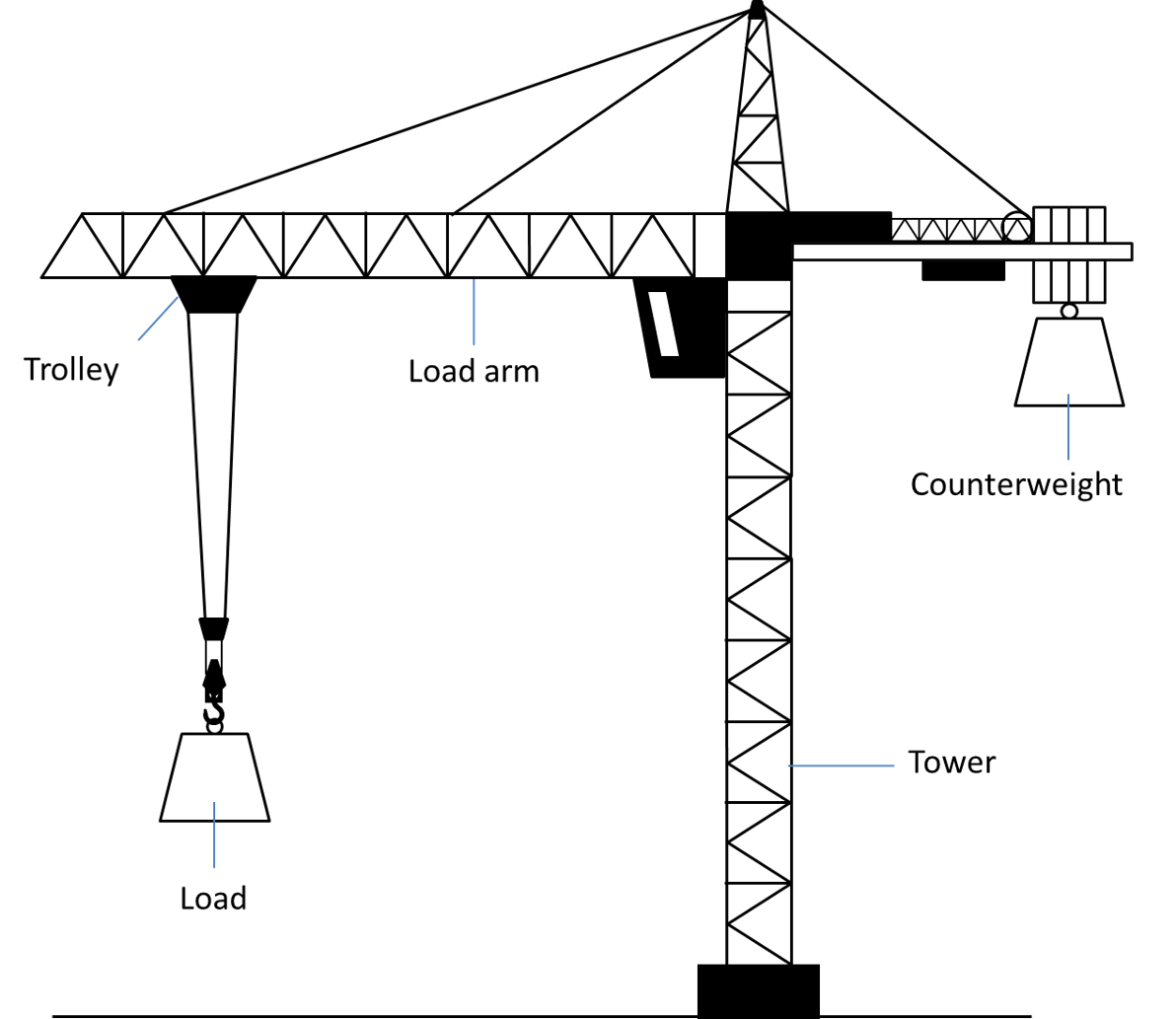
Moment of load = moment of counterweight
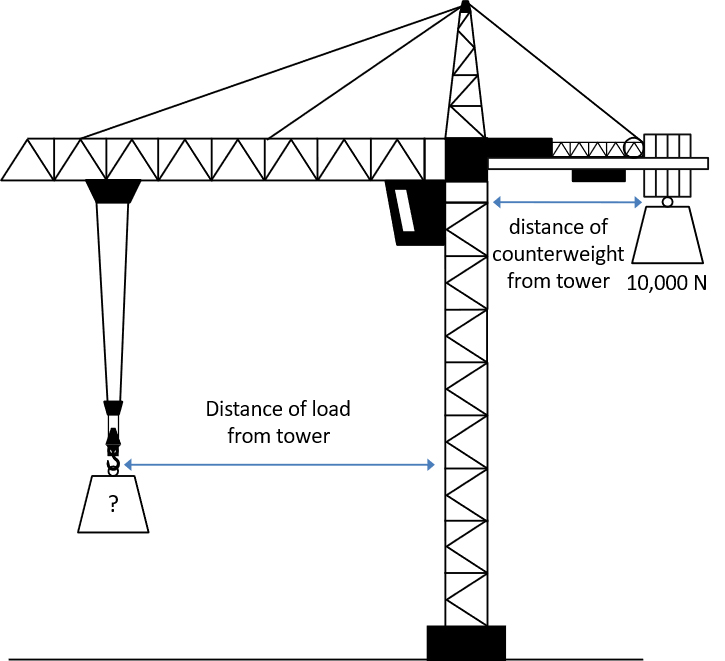
If a 10,000 N counterweight is five metres from the tower, what weight can be lifted when the loading platform is ten metres from the tower?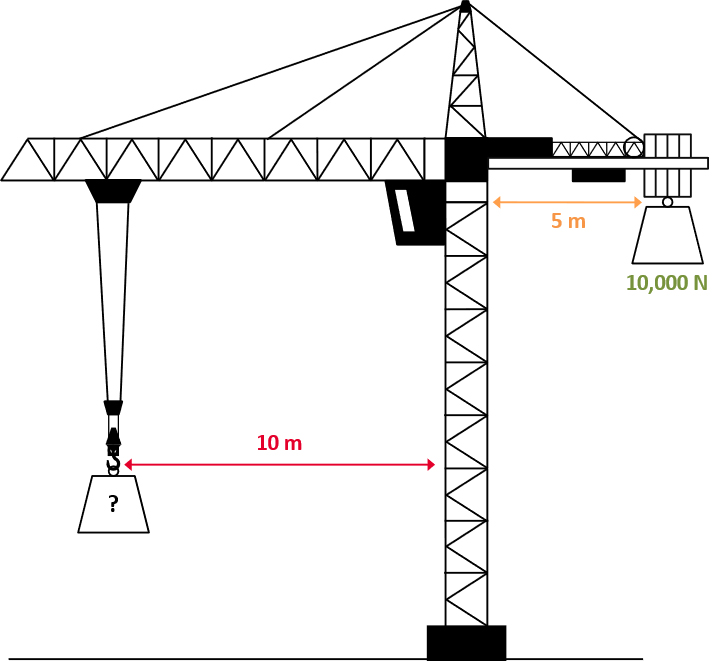
Moment of counterweight = counterweight x distance of counterweight from tower
Moment of counterweight = 10,000 x 5
Moment of counterweight = 50,000 Nm

Moment of load = 5,000 Nm
Summary: